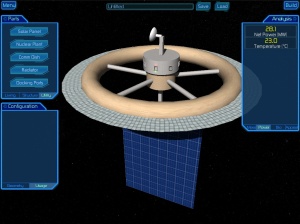In 2007, I worked with the original designers of the Kalpana One orbital settlement to revise the design for rotational stability. To recap, you can measure how much rotational inertia an object has around any axis, but in the case of a space colony, what really matters is how the intended spin axis compares to a “sideways” axis. The standard rule of thumb is that the inertia around the spin axis should be at least 20% greater than the inertia around any other axis. Otherwise, your space colony could start tumbling end-over-end, and your colonists will be justifiably upset.
So, we shortened the Kalpana One length to 325 m, and gave it flat (rather than rounded) ends. We also added a large radiator skirt around the middle, which adds considerably more to the spin axis than to the other axes (you see this sort of shape in toy tops, and for the same reason). This got us the stability we needed, while sacrificing length as little as possible. In the 2007 paper, we wrote:
The best case, in terms of stability, would be flat endcaps; anything else is going to move more mass away from the X and Y axes, while not moving any further away from the Z axis, and thus make stability worse (except perhaps concave endcaps, which may make sense but are not considered here).
But we’ve now spent the last couple of weeks building up
High Frontier’s dynamic simulation, including calculation of rotational inertia. So it’s time to consider those inverted endcaps.
Continue reading →
